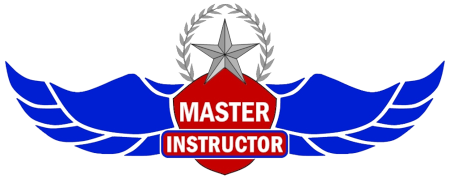by Rich Stowell, MCFI-A
The Master Instructor Continuing Education Program™ offers a national accreditation for aviation educators based on advanced professional standards and rigorous peer review. In the words of former FAA Administrator Marion Blakey, this Program “singles out the best that the right seat has to offer.” Six hundred fifty aviation educators in 49 states and seven countries have earned more than 1,400 designations since 1997. Even though the number of current Masters at any given time represents less than half of one per cent of all certificated flight instructors, this small group is remarkably overrepresented in terms of work product, FAASTeam participation, and ultimately, its impact on safety.
Since the Program’s debut for instance, each individual honored as FAA National Flight Instructor of the Year has been a Master Instructor. Forty-three percent of National FAASTeam Representatives of the Year have also been Masters. Within the Master community:
- 74% hold ground instructor ratings
- 72% participate in the FAA Wings program
- 61% are FAASTeam Members (compared to less than 3% of all CFIs)
- 39% are Gold Seal instructors
- 15% are women (compared to 6% of all pilots and 7% of all CFIs)
- 13% are FAA or industry pilot examiners (compared to 1% of all CFIs)
Master Instructors teach in high schools, colleges, universities, and flight schools. Some are employees, others self-employed. They instruct in classrooms and simulators; gliders and single- and multi-engine aircraft; seaplanes, helicopters, LSAs, and more.
Under the Microscope
Just how prolific this small community has been was revealed in a survey conducted by the Program creators at Master Instructors LLC. For example, respondents collectively had been aviation educators for 1,300 years, including 330 years holding various Master designations. These Masters had received more than 175 aviation awards. They had amassed 380,000 hours of flight time, and provided 200,000 hours of flight and at least 120,000 hours of ground/simulator instruction. Respondents had administered 6,700 check rides/stage checks, and mentored 4,900 other aviation educators. Respondents also reported:
- 4,300 safety seminars given
- 2,800 articles/white papers authored or edited
- 1,700 books, newsletters, etc. authored or edited
- 670 audio-visual programs hosted, scripted, or produced
- 60 aviation-related products, services, and processes developed
The vast majority of Masters acknowledged that the Program challenged them to become better educators. Master Instructors clearly recognize the importance of the Program to their craft, their livelihood, and their marketability as well: Most reported a corresponding increase in income, typically from 10 to 40%; several reported more than a 100% hike in their sustainable hourly rates. Additionally, several flight schools provide incentive packages to their Masters worth more than $8,000 annually.
Once designated, Master Instructors tend to be long-term participants in the Program, loyally renewing their designations every two years. Take the inaugural class of Masters as an example: Greg Brown (#001), Pat Knight (#002), Bill Otway (#004), and Ed Fink (#005) are all seven-time Master Instructors; Rusty Sachs (#003) is an eight-time Master; furthermore, Otway and Sachs have achieved Emeritus status. The 191 members in the current class of Master Instructors have averaged seven years apiece in the Program.
Measurable Safety Dividends
Successful outcome to an emergency can rarely be attributed solely to the teaching methods of any one instructor. Nevertheless, pilots who survive emergencies often attribute the successful outcome, in whole or in part, to an instructor. Indeed, survey respondents identified at least 43 such instances: The reported “saves” ranged from a flap failure during solo stall practice to partial and complete engine failures—some involving smoke and night flying. Other reports described post-crash survival, inadvertent spins, jammed controls, and vacuum system failures. One reported the safe response to a complete electrical system failure in IMC; others told of precautionary landings in various types of aircraft.
Though few in number, Master Instructors have indeed shaped the flight training landscape and improved safety. Their collective contributions to aviation education are both tangible and intangible, and have earned the Master community the respect and appreciation of the industry.
Inside Master Instructors LLC
Based in Longmont, Colorado, Sandy and JoAnn Hill began development of their Master Instructor Program™ in 1995. The Hills administered the Program through another organization from 1997 to 2008; in early 2009, however, they formed Master Instructors LLC to bring greater autonomy to the Program, while preserving impartiality in the designation process. Their Program is FAA Wings-approved and is approved for flight instructor certificate renewals. Six Master designations are offered to appeal to a broad spectrum of aviation educators. A unique, three-tier Aerobatic Instructor Designation Program is available as well, and the Hills are working with others in the industry and the FAA to create additional Master designations.
Nine distinguished Masters serve on the Board of Review, with properly documented portfolios typically taking 2–3 weeks to process. Merely submitting an application, however, is no guarantee of a Master designation: each is handled by at least two reviewers and the denial rate is three percent.
